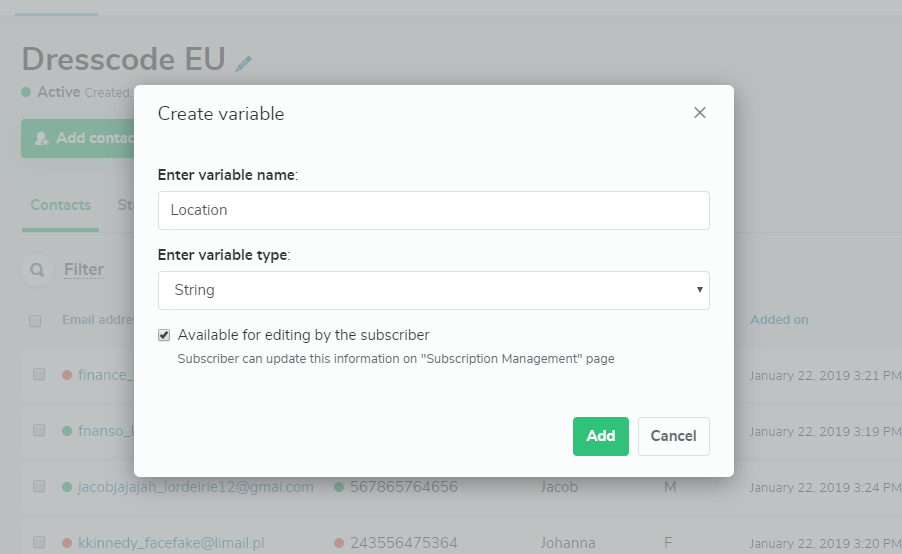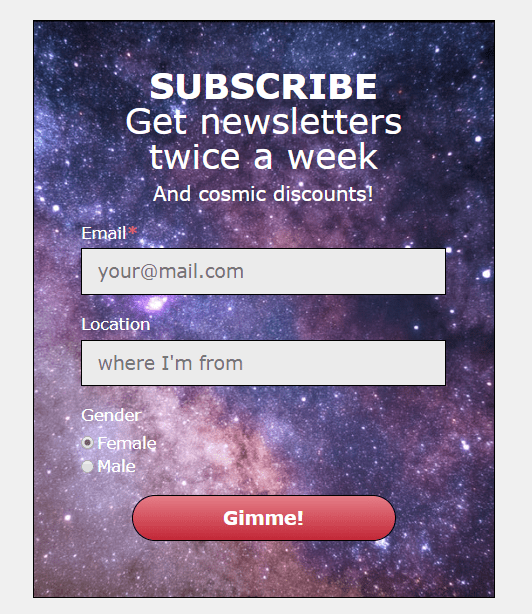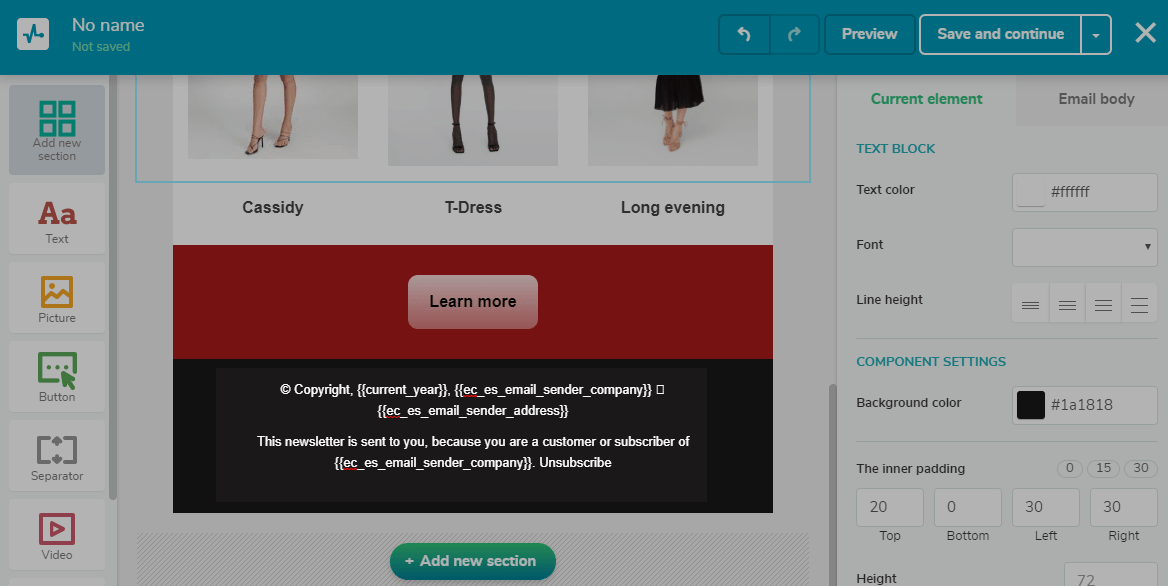Dynamic email content is any personalized part of a mass message that changes based on user behavior or data you have about your subscribers. To create personalized emails, marketers add variables to the mailing list, and group people based on specific common characteristics like location, gender, age, etc. Dynamic email content may also be referred to as AMP emails.
When companies use dynamic email content, they provide subscribers with a more personalized experience. Today, many users are ready to share personal data with brands in exchange for a highly personalized shopping experience and product recommendations. Using this approach may help your business win the competition for the inbox, build long-lasting relationships with your audience, save time, and increase revenue.
How Dynamic Email Content Works
Based on variables. A variable represents dynamic parts of content depending on the information you know about the recipient. Let’s see how to add a variable in two simple steps with SendPulse, using location information as an example here.
Step 1: Add a variable
Go to your mailing list, click on “Add variable,” insert its name, “location” in this case, and
select a variable type.

Step 2: Gather user data that applies to this variable
Upload data from an Excel doc, type it manually, or use a subscription form.
Create a subscription form and add a “Location” field. This way, your mailing list will be filled with location data from new users when they subscribe. However, don’t ask for too much information in addition to email address and name. Otherwise, users will be more likely to churn. The screenshot below is a subscription form that collects users’ email addresses alongside with their location and gender.

Now that you are acquainted with the concept of variables let’s see how you can use them in your email marketing strategy.
How to add dynamic content to emails
- Dynamic Email Subject Lines
- Dynamic Email Body
- Dynamic Email Footer
The usage of variables differs from service to service, so let’s focus on how to use them with SendPulse. You can make any part of an email content dynamic: text sections, images, calls-to-action, or subject lines.
There are three types of variables that you can use:
- Subscriber data variables. By default, these variables include email address, name, and a subscriber ID. Add other variables like birth date, gender, location, order date, etc. to your mailing list using subscription forms or surveys.
- Technical data variables. There are two technical variables: a web-version and an unsubscribe link variable. The first one adds a web version of the email that is helpful when an email is not displayed correctly, or the recipient’s email service provider doesn’t display images. The second adds an unsubscribe link to the footer.
- Sender data variables. These variables include company name, company address, company phone number, and sender email address. These variables are placed in the footer of each email sent with SendPulse by default.
When adding a variable to make content dynamic, think of users who haven’t shared their information: they will see an empty field instead of the material. To avoid that, set up criteria that will automatically substitute an empty field with a general piece of text. When a part of text like “Paris” or “London” from a location variable is absent, use general text instead, for instance, “your city,” or other variations according to the context.
Let’s move on and see how you can personalize different parts of the email.
Dynamic Email Subject Lines
According to MarketingDive, a personalized subject line gives a 50% higher open rate. To personalize it, create an email campaign, select the mailing list, sender email address, and type in the sender name. Write a subject line and add a variable according to your idea.
Write the text for users who haven’t shared their data to keep your content looking natural. For this, set a condition according to which general text should appear, like in the example below.
Dynamic Email Body
You can make different elements dynamic while editing your email template. For this, insert a variable where you want a dynamic text to be displayed, and add the necessary criteria like in the example below.
Dynamic Email Footer
SendPulse automatically adds a footer to every email template to help your company comply with the CAN-SPAM Act — a law against spam emails. Here’s how it looks in a SendPulse email template.

Dynamic Email Content Examples
No doubt, dynamic email content may affect your email marketing results, level of user engagement, and sales, so we’ve gathered some inspiring examples of big companies using variables for personalization.
Netflix. This streaming service encourages users to watch more series by sending them a personalized email based on user's preferences. The dynamic content, in this case, is the image from the series and its name.

Strava. This fitness tracking company sends personalized emails based on user activity during the last month. It helps keep subscribers motivated and inspired. In this example, dynamic content is represented by personal achievements.

Mitsubishi. Here is an example of straightforward dynamic content in the subject line, based on a variable {{name}}.

Read our blog article to get more insights into dynamic email content alongside with fresh ideas for your inspiration!
References
- The article “How to use Dynamic Content in Emails for Higher Engagement” by Instapage gives actionable tips on personalization.
- The article “6 Sophisticated Examples of Dynamic Content Emails” by SmartInsights visualizes the way dynamic content works.
FAQ
💙 Can SendPulse help me create an email with dynamic content?
Yes, sure. Register with SendPulse, add variables to your mailing list, and create personalized interactive emails. Using SendPulse, you can send up to 15,000 emails with dynamic content to 500 recipients monthly for free.
🤔 How do I add dynamic content to my marketing emails?
Register with SendPulse, upload your mailing list, and assign variables to specific users based on common characteristics like age, gender, location, etc. Then, follow this guide to create an email campaign with these variables. It allows you to use a personalized approach for every subscriber on your list by making images, pieces of text, subject lines, and CTA buttons dynamic.
⚙️ How does dynamic email content work?
You can make some parts of your email, like images, pieces of text, or CTA buttons dynamic based on variables assigned to particular recipients. For instance, this approach helps promote different apparel products for men and women using one email template. Dynamic content in emails allows you to create a personalized experience, boost engagement, and provoke an emotional response. With SendPulse, you can send up to 15,000 emails with dynamic content to 500 subscribers monthly at no charge, so register and give it a try.
Last Updated: 22.03.2023

or